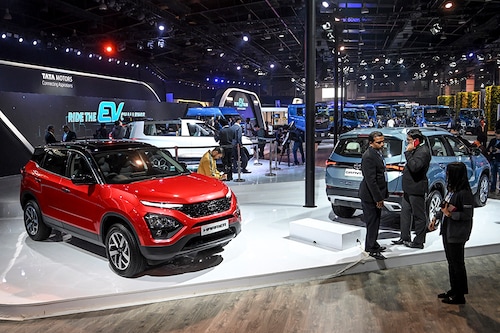Why it makes sense for Tata Motors to split into two separate listed companies
Speculations are rife that Tata Motor's electric vehicle arm could also go public, possibly after the current demerger that could be completed in the next 12-15 months


Tata Motors has decided to split itself into two separate listed companies.
On March 04, the company said that its board of directors had approved a proposal for the demerger of Tata Motors Ltd into two separate listed companies, one housing the commercial vehicles business and the other comprising its passenger vehicle businesses including electric vehicles and JLR.
“The demerger will be implemented through an NCLT scheme of arrangement and all shareholders of TML shall continue to have the identical shareholding in both the listed entities," the company said in a statement.
Tata Motors has a market capitalisation of over Rs3.28 lakh crore, having doubled that in a span of one year on the back of a strong performance in its passenger vehicles division. Tata Motors and Hyundai are currently neck to neck in a fight for the second spot in India’s passenger vehicle market, currently the fourth largest in the world.
“Since 2021, (commercial vehicles (CV), passenger vehicles (PV+EV), and Jaguar Land Rover), these businesses have been operating independently under their respective CEOs," a statement said. “The demerger is a logical progression of the subsidiarisation of PV and EV (electric vehicles) businesses done earlier in 2022 and shall further empower the respective businesses to pursue their respective strategies to deliver higher growths with greater agility while reinforcing accountability."
Already in 2020, Tata Motors had decided to hive off its passenger vehicle division into a separate entity and put Shailesh Chandra, who had been looking after Tata Motors’ electric vehicle division, in charge of it. The new entity, Tata Motors Passenger Vehicles Limited, has since led the market capitalisation growth for Tata Motors. Tata Motors currently corners 14 percent of India’s domestic automobile market while its commercial business has a market share of 41.7 percent.
In 2021, the company also set up a subsidiary Tata Passenger Electric Mobility, housing its electric vehicles, which has already managed a staggering valuation of $9.1 billion after investments from TPG Rise Climate. Tata Motors has lined up another $2 billion to be invested by 2026 to launch 10 new EVs including the Curvv, Harrier EV, Sierra EV, and the Avinya.
“While there are limited synergies between commercial vehicles (CV) and passenger vehicles (PV) businesses, there are considerable synergies to be harnessed across PV, EV, and JLR particularly in the areas of EVs, autonomous vehicles, and vehicle software which the demerger will help secure," the company said in a statement.
Over the next few years, speculations are rife that Tata Motor’s electric vehicle arm could also go public, possibly after the current demerger that could be completed in the next 12-15 months. Tata Motors is currently India’s largest electric vehicle maker with a market share of nearly 80 percent.
In addition, the company is setting up an ecosystem that will build everything from batteries and charging stations to financing vehicles and finally putting them on the road. No other automaker in India can currently counter that proposition. The project, known as Tata UniEVerse, is an ecosystem that will leverage group synergies, from companies such as Tata Power, Tata Chemicals, Tata Autocomp, Tata Consultancy Services (TCS), Tata Digital, Tata Elxsi and Tata Motors Finance.
Last year, Tata Technologies, a technology arm of the Tata Group which provides services to electric vehicles and aviation among others had raised around $365 million in IPO. That IPO from the group came after a 20-year hiatus since TCS was listed in 2004.
First Published: Mar 04, 2024, 19:07
Subscribe Now